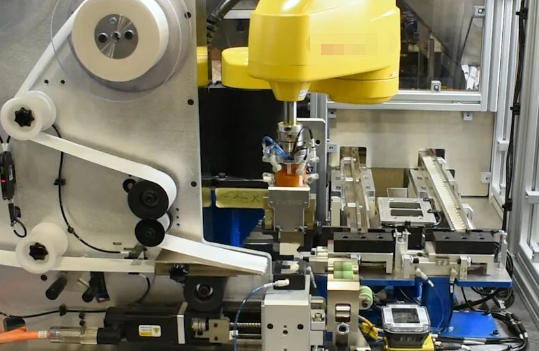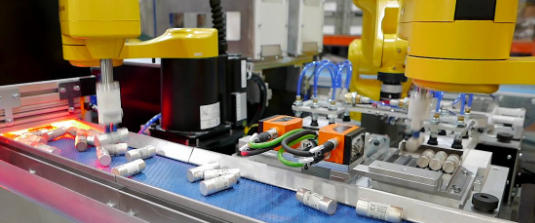Views: 222 Author: Rebecca Publish Time: 2025-11-02 Origin: Site









Content Menu
● What is an Automatic Feeder System?
● Types of Automatic Feeder Systems
>> Drum Feeders
>> Flex Feeders
● Advanced Feeder System Features
>> Selection, Orientation, and Positioning
>> Control Systems and Automation Integration
● Key Considerations for Selecting an Automatic Feeder System
>> System Integration and Compatibility
>> Throughput, Capacity, and Scalability
>> Material and Product Compatibility
>> Automation Level and Upgrade Potential
>> Cost Analysis and Investment Return
>> 1. Analyze Production Requirements
>> 3. Evaluate Supplier Credentials
>> 4. Request Demos and Onsite Trials
>> 5. Ensure Integration Support
● Technical Specifications and Optimization Strategies
>> Precision Feeding and Accuracy
>> Programming and Customization
>> Installation and Space Planning
>> Sustainability and Resource Efficiency
● Application Scenarios by Industry
>> Electronics and Medical Device Assembly
>> Food, Beverage, and Consumer Packaging
>> Chemical and Pharmaceutical Operations
● Feeder System Features Comparison
● Maximizing ROI with Feeder Systems
>> Streamlined Production Flows
>> Labor Savings and Workforce Optimization
>> Enhanced Quality and Consistency
● Latest Trends and Innovations
● FAQs
>> 1. How do I choose the best feeder system for my production line?
>> 2. What are typical maintenance requirements for automatic feeders?
>> 3. How do automated feeders support Industry 4.0 and smart factory initiatives?
>> 4. Is an automatic feeder system cost-effective for small-scale manufacturers?
>> 5. Can feeder systems be customized for niche manufacturing sectors?
Selecting the right automatic feeder system has become indispensable for manufacturers striving for efficient, precise, and high-throughput production. Whether operating in automotive, electronics, food, beverage, chemicals, or pharmaceuticals, selecting an optimal feeder ensures streamlined operations, reduced costs, and enhanced product consistency. This buying guide provides detailed information about feeder system types, technical and practical considerations, essential features, and industry-specific recommendations. Follow this guide to maximize your investment and keep your production line competitive.

Automatic feeder systems are designed to handle and deliver components, bulk materials, or product packages to specific workstations or assembly lines automatically. By minimizing manual part handling and integrating automated sorting, orientation, and dispensing, feeder systems boost efficiency, reliability, and product quality. They form the backbone of modern production—supporting 24/7 lights-out manufacturing.
Vibratory bowl feeders are widely used for high-precision part orientation and delivery. Employing controlled vibration, they sort parts according to geometry before delivering them one at a time to assembly lines. Stainless steel and polymer-based bowls are common, allowing 2,000+ parts per minute, with robust designs for longevity in demanding environments.
Drum feeders are ideal for untangling and separating small bulk items such as springs, tubes, and other cylindrical parts. Their rotating mechanism prevents damage and static charge build-up, making them especially suitable for fragile components in electronics and medical device manufacturing.
Flex feeders leverage programmable robotic platforms and machine vision to adapt to multiple part types. These systems excel in smart factories that demand rapid changeover and batch flexibility. The compact design and parallel feeder configuration provide high throughput with efficient space utilization.
Gravity feeders simply use gravity's force to dispense bulk materials, containers, or components. Their straightforward design promotes reliability, ease of cleaning, and cost-effectiveness—often required for packaging, food, and chemical processing.
Modern systems incorporate high-end sensors and machine vision for part selection, orientation, and rejection. This ensures that only correctly positioned parts proceed to the next processing stage, automating quality control and reducing defective output.
Today's automatic feeders often include programmable logic controllers (PLCs), IIoT connectivity, and robotics integration for seamless communication with central process controls. Advanced models support remote monitoring, predictive maintenance, and real-time data analytics. This creates a “smart” production environment ideal for Industry 4.0 transformation.
Many feeder setups include intermediate buffer units and transfer links. These provide continuous part flow and prevent bottlenecks during surges or temporary equipment stoppages, thereby optimizing uptime.
Manufacturers now routinely offer tailor-made feeder solutions for specific sectors. Feeder bowl geometry, vibration intensity, robot programming, and batch size configuration are customizable according to client needs, ensuring technical compatibility and improved ROI.
Start with a detailed assessment of production goals, anticipated throughput, part complexity, and product changeover requirements. Applications demanding frequent part geometry changeovers or tight tolerances benefit most from programmable flex feeders, while bulk, uniform material operations often favor drum or gravity systems.
Confirm compatibility of the feeder's control systems with existing production machinery, including industrial robots, packing lines, and ERP/MES platforms. Modern feeders support deep integration with factory networks, enabling cross-device coordination and centralized management.
Thoroughly evaluate feeder system capacity (rate/hour) and scalability options. Ask for performance metrics suited to your expected growth, and ensure that system expansion or reconfiguration won't require full equipment replacement.
Feeder systems should be precisely engineered for the material properties of your components. This includes anti-clog features for powders and granules, anti-static coatings for electronics, food-safe construction for consumables, and customizable channels for irregular shapes.
Prioritize feeders outfitted with upgradable automation features. IIoT modules, machine vision cameras, and modular base units allow future enhancements without large-scale retrofits, helping future-proof your investment as your factory scales.
Choose feeder designs with self-diagnostic features, easy-access service points, and modular build for rapid part replacement. This greatly reduces maintenance time and downtime during regular cleaning or parts swaps.
Calculate total cost of ownership, considering initial price, installation, integration, maintenance, and anticipated productivity improvements. Most automated feeder systems offer significant labor savings, reduction in manual errors, and improved product yield that outweigh upfront costs.

Gather data on your current part handling challenges, desired throughput, and technical integration needs. Consider bottleneck areas and productivity loss resulting from manual handling.
Compare the key specifications and features for candidate feeders:
- Vibratory bowl feeders: high-speed, precise small part orientation
- Drum feeders: tangle-free handling of bulk and cylindrical parts
- Flex feeders: rapid changeover, batch adaptable, programmable logic
- Gravity feeders: simple, reliable bulk dispensing
Assess suppliers' customization capacity, after-sales support, global reach, and proven case studies in your industry. Insist on sample runs and technical demonstrations to validate system performance.
Ask suppliers for onsite demonstrations, access to reference installations, and technical data sheets. This ensures accurate decision-making with real-world performance as evidence.
Demand installation guidance, software integration expertise, and employee training. Confirm IIoT and robotics compatibility for advanced production systems.
High-quality automatic feeders must dispense consistent quantities for each cycle, with error margins typically less than 1% of total batch weight. Integrated calibrations, real-time sensors, and feedback controls maintain accuracy for sensitive applications such as pharmaceuticals and high-value electronics.
Flex feeders can be programmed for product-specific recipes, orientation patterns, and sorting logic, often through user-friendly interfaces. IT and engineering teams can customize these parameters for quick changeovers and rapid batch launches.
Feeder systems should accommodate factory layouts, space constraints, and safety requirements. Modular units and buffer zones can be configured to fit tight production environments, reducing the risk of installation disruption.
Choose energy-efficient motors and eco-friendly materials, which reduce long-term operating costs and environmental impact. Automated shut-off, idle mode, and recovery features optimize power consumption during low-utilization periods.
In high-volume automotive factories, vibratory and flex feeders enable fast and reliable part orientation for complex assemblies such as wiring harnesses, fasteners, and engine components. Integrated machine vision and robotics ensure top-level quality control.
Flexible feeders equipped with anti-static surfaces and programmable logic are crucial for handling miniature electronics and medical devices. Their high accuracy supports compliance with international standards and reduces rejection rates.
Drum and gravity feeders deliver bulk consumables, packaging substrates, and containers to filling and sealing lines. High hygiene standards and ease-of-cleaning features are vital in these applications, supporting both safety compliance and operational efficiency.
Bulk material feeders and vibratory bowls support critical dosing, portioning, and traceability needs. Advanced systems minimize cross-contamination, automate recordkeeping, and enable rapid changeover between products.
| Feeder Type | Best For | Throughput | Changeover Ease | Integration | Maintenance | Cost |
|---|---|---|---|---|---|---|
| Vibratory Bowl | Precise Small Parts | High | Medium | Good | Moderate | Medium |
| Drum | Bulk/Irregular Parts | Very High | Low | Basic | Low | Low |
| Gravity | Bulk Dispensing | Medium | Low | Basic | Low | Low |
| Flex Feeders | Mixed Products | High | High | Excellent | Medium | High |
Automatic feeders eliminate bottlenecks, enhance product handling speed, and create predictable process flows. Manufacturers benefit from faster production cycles, improved product yield, and reduced downtime.
By automating manual handling, manufacturers can reallocate workforce resources to higher-value tasks, boost morale by reducing repetitive labor, and minimize labor costs over time.
Automated feeders usher in standardization and precision—key elements for maintaining high product quality and customer satisfaction in competitive markets.
- Schedule regular cleaning and inspection cycles to prevent build-up and contamination.
- Replace wear parts based on supplier recommendations.
- Verify accuracy of sensors and automated controls frequently.
- Utilize modular designs for swift part swaps and minimal disruption during maintenance.
- Maintain backup power supplies to avoid operational interruptions.
Modern feeder systems increasingly adopt IIoT technologies, real-time analytics, machine learning-based predictive maintenance, and smart robotics. Advances in material science support longer service life, while sustainability features further reduce environmental footprints. User interfaces now allow remote management and optimization from anywhere.
Investing in the right automatic feeder system is one of the most important steps manufacturers can take to boost efficiency, enhance product quality, and future-proof production lines. By identifying technical requirements, evaluating supplier capabilities, and insisting on advanced integration support, factories of all sizes can benefit from reduced waste, streamlined processes, and robust scalability. This buying guide equips you with knowledge and strategies to select, install, and optimize the best feeder system for your specific production goals.

Begin by analyzing your throughput, material characteristics, and integration needs. Consult with suppliers about technical compatibility and scalability for evolving demands.
Essential maintenance includes regular inspections, cleaning schedules, sensor calibration, and timely replacement of moving parts to maximize reliability.
Advanced feeders integrate IIoT connectivity, machine vision, and predictive analytics for autonomous operation, real-time monitoring, and flexible batch processing.
Although upfront investment is significant, labor savings, reduction in errors, and increased throughput deliver long-term value for businesses of all sizes.
Yes. Leading suppliers tailor feeder geometry, controls, and software to meet the unique needs of industries like electronics, pharmaceuticals, food processing, and automotive.
Automatic Feeder System Buying Guide: Key Considerations for Your Production Needs
The Advantages of Integrating An Automatic Feeder System with Your Existing Machinery
Why Top Manufacturers Choose Automatic Feeder Systems for Their Production Lines?
What To Look for in A High-Quality Automatic Feeder System for Kitchenware Production?
The Future of Cutlery Manufacturing: Why You Need An Automatic Feeder System?
Automatic Feeder System Vs. Traditional Feeding Systems: Which Is Better for Your Factory?
Comparing The Best Automatic Feeder Systems: Features And Benefits
How To Choose The Right Automatic Feeder System for Your Business?
Best Automatic Feeder Systems for High-Speed Production Lines
What Is The Difference Between Manual And Automatic Feeder Systems?
